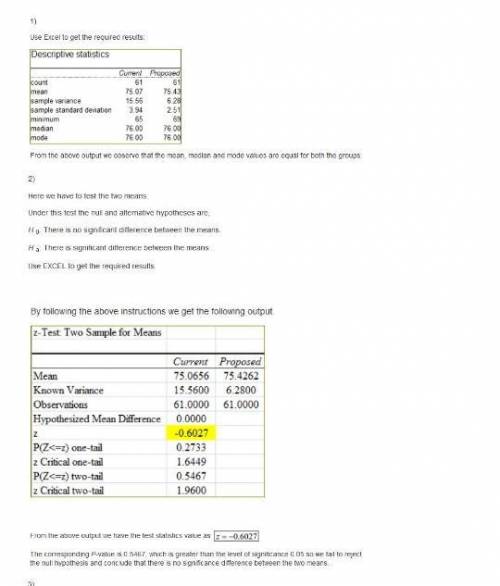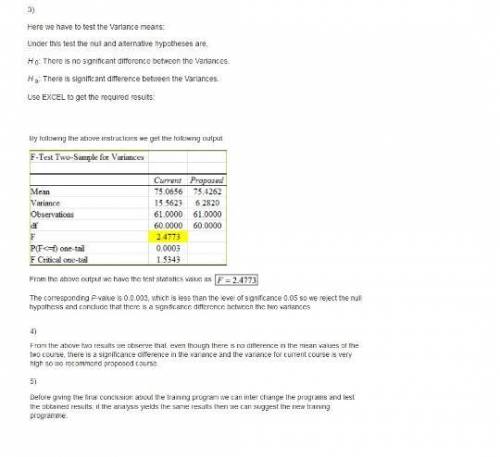
Mathematics, 25.04.2020 03:17 anisagreen10
An air force introductory course in electronics uses a personalized system of instruction whereby each student views a videotaped lecture and then is given a programmed instruction text. the students work independently with the text until they have completed the training and passed a test. of concern is the varying pace at which the students complete this portion of their training program. some students are able to cover the programmed instruction text relatively quickly, whereas other students work much longer with the text and require additional time to complete the course. the fast students wait until the slow students complete the introductory course before the entire group proceeds together with other aspects of their training.
A proposed alternative system involves the use of computer-assisted instruction. In this method, all students view the same videotaped lecture and then each is assigned to a computer terminal for further instruction. The computer guides the student, working independently, through the self-training portion of the course.
To compare the proposed and current methods of instruction, an entering class of 122 students was assigned randomly to one of the two methods. One group of 61 students used the current programmed-text method and the other group of 61 students used the proposed computer-assisted method. The time in hours was recorded for each student in the study.
The following data are provided in the data set Training.
Course Completion Times (hours) for Current fraining Method
76 78 76 79 77 69 76 75 78 82 79 79 77 80 72 65 76 66 74 79 82 77 78 70 76 72 72 79 76 74 74 69 73 73 76 72 74 79 71 76 73 77 72 70 81 77 72 70 77 69 84 78 70 78 75 74 73 81 73 75 74
Course Completion Times (hours) for Proposed Computer-Assisted Method
74 74 73 77 76 76 75 77 77 78 75 76 77 69 69 78 73 74 78 76 77 76 77 72 74 75 75 75 77 78 80 72 76 76 77 71 73 75 74 76 79 73 72 77 75 75 78 76 75 76 75 76 72 78 80 72 76 77 72 77 82
Required:
1. Use appropriate descriptive statistics to summarize the training time data for each method. What similarities or differences do you observe from the sample data?
2. Use the methods of Chapter 10 to comment on any difference between the population means for the two methods. Discuss your findings.
3. Compute the standard deviation and variance for each training method. Conduct a hypothesis test about the equality of population variances for the two training methods. Discuss your findings.
4. What conclusion can you reach about any differences between the two methods? What is your recommendation? Explain.
5. Can you suggest other data or testing that might be desirable before making a final decision on the training program to be used in the future?

Answers: 1


Another question on Mathematics

Mathematics, 21.06.2019 17:20
Closing a credit card usually _your debt ratio.a. increasesb. decreasesc. improvesd. has no effect on
Answers: 1

Mathematics, 21.06.2019 17:30
Which of the following is true for the relation f(x)=2x^2+1
Answers: 3


Mathematics, 21.06.2019 19:50
Polygon abcde is reflected to produce polygon a′b′c′d′e′. what is the equation for the line of reflection?
Answers: 1
You know the right answer?
An air force introductory course in electronics uses a personalized system of instruction whereby ea...
Questions

Mathematics, 20.10.2020 16:01





Computers and Technology, 20.10.2020 16:01

Mathematics, 20.10.2020 16:01

Computers and Technology, 20.10.2020 16:01




Social Studies, 20.10.2020 16:01


Spanish, 20.10.2020 16:01

Mathematics, 20.10.2020 16:01


Mathematics, 20.10.2020 16:01

Spanish, 20.10.2020 16:01

History, 20.10.2020 16:01






